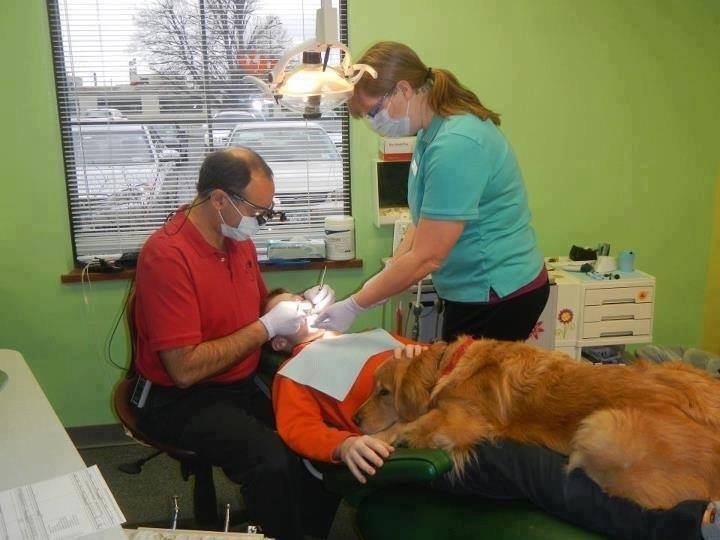Preparing for Lip Tie Surgery: Tips for Parents
Imagine discovering a hidden string that, once untied, could unlock a world of comfort and growth for your child. This isn’t a tale spun from fairy dust but the real-life journey many parents embark upon when they learn their child has a lip tie. It’s a condition that, although small in appearance, can significantly impact feeding, speech, and dental development. Preparing for lip tie surgery can feel like standing at the edge of a forest—knowing you need to get through it, but unsure of the path ahead. Fear not, for this guide is your torchlight, illuminating the steps to ensure a journey not just of successful surgery but of transformation and triumph.
Understanding the Terrain: What is a Lip Tie
Understanding what a lip tie is constitutes the first step for parents preparing for their child’s lip tie surgery. A lip tie occurs when the frenulum, the piece of tissue connecting the upper lip to the gum of the upper jaw, is tighter or thicker than usual, restricting the lip’s movement. This condition can significantly impact an infant’s ability to breastfeed effectively, as it may hinder the baby’s ability to form a proper latch, leading to potential nutritional deficiencies and discomfort for both the baby and the breastfeeding parent. Beyond feeding difficulties, a lip tie can also pose challenges in speech development and dental health as the child grows, making early intervention through surgery a critical consideration for affected families.
Preparing for lip tie surgery involves understanding the procedure itself and its potential impacts on the child’s health and development. The surgery, typically a quick and minimally invasive procedure, aims to release the tight frenulum, thereby improving lip mobility. Enhanced mobility can lead to immediate improvements in breastfeeding and, over time, contribute to more favorable speech development outcomes and dental health. Parents should engage in discussions with healthcare professionals to fully grasp the procedure, its benefits, and any possible risks or post-operative care requirements to ensure they are well-prepared for the journey ahead.
Finally, preparation extends beyond the surgical procedure to include post-operative care and support. Parents may need to engage in specific exercises with their child to prevent reattachment of the frenulum and to promote healing. Understanding the significance of these exercises, along with being prepared for potential temporary changes in feeding patterns or mood in their child, can help parents navigate this period more smoothly. Armed with knowledge and support from healthcare professionals, parents can approach their child’s lip tie surgery with confidence, knowing they are paving the way for improved health and comfort for their little ones.

Lip Tie Surgery
Choosing Your Guide: Selecting the Right Specialist
Choosing the right specialist for your child’s lip tie surgery is a crucial step that can significantly influence the outcome and overall experience of the procedure. Given the delicate nature of this intervention, especially in infants, parents need to conduct thorough research to ensure they select a healthcare professional who is not only skilled in performing the surgery but also experienced in managing the specific needs of young patients with lip and tongue ties. This involves looking for specialists who have a proven track record of successful procedures and who come highly recommended by other parents or healthcare providers. It’s equally important to consider the approach of the specialist towards aftercare and their willingness to provide comprehensive support throughout the healing process.
Consulting with an International Board Certified Lactation Consultant (IBCLC) who has experience with babies facing tethered oral tissues can be an invaluable step. These professionals can offer guidance on how the lip tie might be affecting feeding and recommend specialists who are adept at addressing these issues surgically. Additionally, seeking out a pediatric dentist or an ENT specialist who uses the latest technology, such as laser surgery, can ensure a more precise and less invasive procedure, potentially leading to quicker recovery times and less discomfort for the child.
Finally, arranging consultations with potential specialists allows parents to gauge the comfort level and trustworthiness of the healthcare provider. During these meetings, it’s crucial to ask about the provider’s experience, the specifics of the procedure, expected outcomes, and any potential risks or complications. Understanding their approach to pain management during and after the surgery, as well as their recommendations for post-operative care, will help parents make an informed decision. Choosing the right specialist is not just about their credentials but also about finding someone who communicates openly and empathizes with the concerns of parents and the well-being of the child.
Mapping the Journey: What to Expect Before, During, and After Surgery
Preparing for your child’s lip tie surgery involves mapping out the journey from start to finish, providing clarity, and reducing anxiety for both parents and child. Before the surgery, it’s essential to have a detailed consultation with the chosen specialist to understand the procedure thoroughly. This is the time to ask questions about the surgery’s duration, the type of anesthesia used, and any preparations needed on the day. Parents might also inquire about the need for pre-surgical assessments or adjustments in feeding routines leading up to the procedure. It’s crucial to follow all pre-operative instructions provided by the healthcare team to ensure the child’s readiness for surgery.
During the surgery, which is typically a quick and minimally invasive process, parents might be asked to wait in a designated area. The use of advanced techniques, such as laser surgery, often means the procedure can be completed with precision and minimal discomfort for the child. Understanding the steps involved can help parents feel more at ease during this waiting period. Healthcare professionals usually ensure that the environment is calm and supportive, recognizing the emotional weight of the moment for families.
After the surgery, the focus shifts to healing and recovery. Parents should expect to receive specific aftercare instructions, which may include pain management strategies, wound care tips, and exercises to prevent reattachment of the frenulum. Observing the child’s feeding behavior and comfort levels becomes crucial, as improvements can be immediate or develop over time. Follow-up appointments are vital to monitor healing and address any concerns. Embracing this journey with knowledge and support enables parents to navigate through the process with confidence, ultimately contributing to a smoother recovery and a brighter outcome for their child.
Packing Essentials: Preparing Your Home and Family
Preparing your home and family for your child’s lip tie surgery involves thoughtful consideration of both the physical and emotional needs that may arise. Packing essentials and setting up a comfortable recovery space are key steps in this process. Before the day of the surgery, gather items that will ease your child’s post-operative discomfort and promote healing. This may include soft, comforting foods that require minimal chewing, such as applesauce, yogurt, or smoothies, especially if older children are involved. Additionally, having a supply of ice packs or cold compresses can help alleviate any swelling or discomfort around the surgical area. Ensuring these items are readily available will help you focus on your child’s care without the need for last-minute errands.

Lip Tie Surgery
Creating a calm and soothing environment at home can significantly impact your child’s recovery experience. Designate a quiet, comfortable space where your child can rest undisturbed. Equip this area with their favorite blankets, pillows, and a selection of activities that require minimal effort, such as coloring books, storybooks, or movies. This preparation not only aids in physical recovery but also provides emotional reassurance to your child, making them feel safe and loved during their healing process.
Equally important is preparing siblings and other family members for what to expect. Discussing the procedure in age-appropriate terms can help alleviate any fears or concerns they might have. Encouraging them to be gentle and understanding towards their recovering sibling fosters a supportive family atmosphere. Additionally, organizing extra help or adjusting family routines temporarily can ease the burden on parents, allowing them to devote more attention to the recovering child. By anticipating these needs and preparing your home and family accordingly, you create a nurturing environment that facilitates a smoother recovery and minimizes stress for everyone involved.
The Power of Support: Building Your Village
Embarking on the journey of your child’s lip tie surgery underscores the importance of having a robust support system in place. Building your village of support is not just beneficial; it’s essential. This network can include family members, friends, healthcare providers, and even online communities who have gone through similar experiences. Start by communicating openly with those close to you about the upcoming surgery, expressing any concerns or needs you might have during this period. Family members and friends can offer practical help, such as assisting with household chores or caring for other children, allowing parents to focus on the recovery of their child post-surgery.
Healthcare providers, particularly those who specialize in post-operative care for lip tie surgeries, are invaluable members of your support village. They can offer professional advice, answer questions, and provide reassurance throughout the healing process. Engaging with lactation consultants, especially if breastfeeding challenges arise from the lip tie, can also be incredibly supportive. These professionals can offer strategies and modifications to improve feeding techniques post-surgery, ensuring both mother and baby are comfortable and nourished.
Moreover, connecting with online communities and support groups for parents going through similar experiences can offer a different kind of solace. These platforms allow for the sharing of stories, tips, and encouragement, reminding parents that they are not alone in their journey. Hearing success stories and learning how others navigated their post-operative challenges can be incredibly empowering. Building your village doesn’t just provide practical support; it envelops you in a community of empathy, understanding, and shared experiences, which can be profoundly comforting during what can be an anxious time. Embracing this network of support ensures that you and your child are surrounded by love and assistance every step of the way, making the journey toward healing a shared endeavor.
After the Storm: Post-Surgery Care and Observations
After the completion of your child’s lip tie surgery, entering the phase of post-surgery care is crucial for a smooth recovery and optimal healing. The immediate period following the surgery requires vigilant care and observation to ensure your child’s comfort and to monitor for any signs of complications. Pain management is one of the first considerations; your healthcare provider will guide you on safe pain relief methods suitable for your child’s age and specific situation. Keeping the surgical area clean is also paramount to prevent infection. Gentle rinsing with prescribed solutions or following specific oral hygiene instructions provided by your specialist can aid in this process. Additionally, maintaining hydration and encouraging soft foods can help ease the transition back to normal eating habits, especially in the first few days after the procedure.

Lip Tie Surgery
Observing your child’s behavior and feeding patterns post-surgery is equally important. Parents should look for improvements in feeding efficiency and comfort, as these are among the primary indicators of successful recovery. However, it’s essential to be patient, as some benefits, particularly related to speech development, may manifest gradually over time. Regular follow-up appointments with your healthcare provider will allow for a professional assessment of the healing process and the opportunity to address any concerns that may arise. These check-ins are vital for ensuring the frenulum is healing correctly and not reattaching in a way that could negate the benefits of the surgery.
Lastly, emotional support plays a significant role in the recovery process. Children, especially young ones, may feel confused or irritable post-surgery. Offering extra cuddles, and reassurance, and engaging in calm, comforting activities can help alleviate their distress. Remember, the journey through lip tie surgery and its aftermath is not just a physical healing process but an emotional one as well. By providing diligent care, close observation, and plenty of love and support, parents can help their child navigate this period with resilience, paving the way for improved health and well-being in the aftermath of the surgery.
Conclusion
Preparing for your child’s lip tie surgery is more than just a medical procedure; it’s a rite of passage that can lead to profound improvements in their quality of life. By equipping yourself with knowledge, choosing the right specialist, and preparing mentally, physically, and emotionally, you’re setting the stage for a smoother surgery and recovery process. Remember, it’s not just about untying a physical knot but about unwrapping the gift of potential for your child. As you stand at the threshold of this journey, know that you’re not alone. With each step forward, you’re moving towards a future where your child can eat, speak, and smile with ease. The path may seem daunting, but the destination—a happier, healthier child—is worth every step. So, take a deep breath, and together with your village of support, embrace the journey towards unlocking your child’s full potential.
Evergreen Pediatric Dentistry
https://www.google.com/maps?cid=14720788683151219551
12910 Totem Lake Blvd NE #103, Kirkland, WA 98034, United States
(425) 814-3196
https://evergreenkidsdentist.com/


